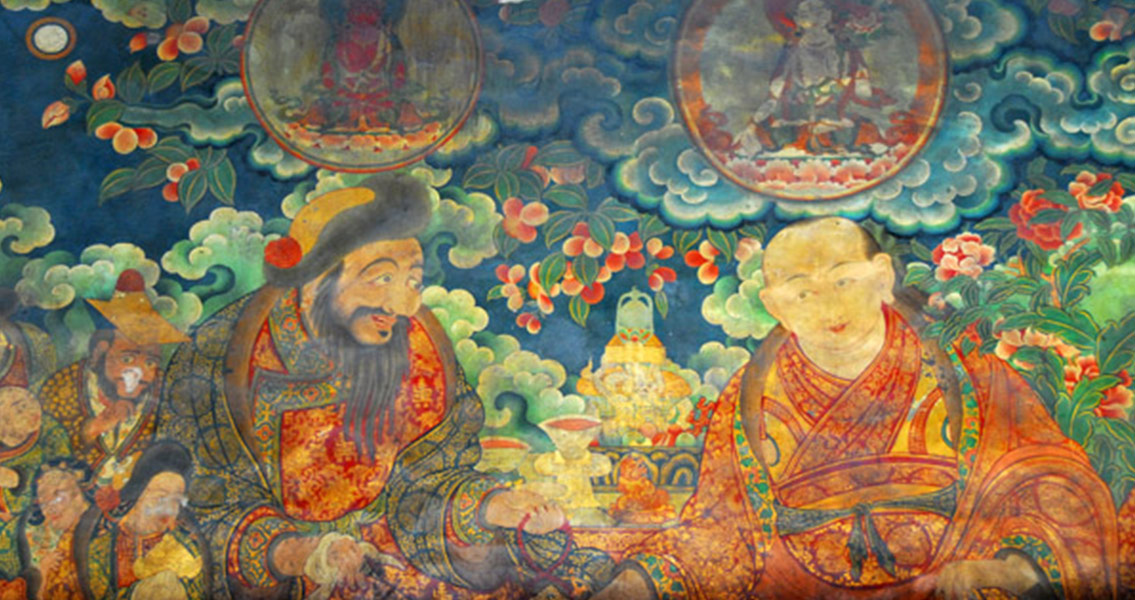<![CDATA[On Tuesday evening the Dalai Lama told the BBC Newsnight program that he might be the last person to hold the title. The Tibetan spiritual leader admitted to the BBC that he might not have a successor, and it would be up to the Tibetan people to decide if they wanted to continue the tradition beyond his death. If he is correct, an ancient religious institution that has at times taken on a deeply political role would come to an end. Dating back to the late fourteenth century, the Dalai Lama is the leader of the Dge-lugs-pa or Yellow Hat Sect of the Tibetan Buddhists. The Yellow Hats were a reforming group who advocated deep academic study in Buddhism and restored discipline to monastic life. They reduced the presence of magical rites in Buddhist practice, and followed strict rules of celibacy, as well as abstinence from meat and alcohol. The sect rose to prominence in Tibet in the seventeenth century, and was linked with the country's unusually large monastic population. The first leader of the Yellow Hats was Gedun Drupa, born in 1391, however the title Dalai Lama was bestowed upon him retrospectively, over a century after his death. Drupa was officially just an abbot during his own lifetime, as was his successor Gedun Gyasto. The title of Dalai Lama came about in the sixteenth century, from an unlikely source. It means "Ocean of Wisdom", and was conferred by the Mongolian King Altan Khan on the sect's third leader, Sonam Gysato. Altan Khan's great grandson, Yon-tan-rgya-mtsho, became the fourth Dalai Lama, and the only one in history who was not Tibetan. Ngag-dbang-rgya-mtsho, the fifth Dalai Lama, was responsible for cementing the long held connection between the position and the people of Tibet. Sometimes referred to as the Great Fifth, he established, with the aid of the Khoshut Mongols, the Yellow Hats as the dominant force in Tibet in both the spiritual and physical world . In many ways, the actions of the fifth Dalai Lama still influence Buddhism, and Tibet, today. The seventh incarnation of the Dalai Lama ruled during another crucial event in the history of Tibet. A civil war was followed by the establishment of the Chinese Manchu suzerainty over the country. The eighth Dalai Lama saw Tibet invaded by Gurkha troops from Nepal. The invasion was successfully repelled, with the aid of Chinese forces. By the time of the eighth Dalai Lama's death in 1804, the involvement of China in Tibetan affairs was becoming increasingly apparent. After four Dalai Lamas who all died at a young age, the thirteenth, Thupten Gyatso, led a period of drastic change in Tibet. At the start of the twentieth century he reestablished the historic political responsibilities of the position, and took advantage of the Chinese Revolution of 1911 to expel the Chinese military presence from Tibet. Tibet became an independent country, and the Dalai Lama oversaw a period of great reform, including the creation of a Tibetan currency, the development of Tibet's military and the softening of certain monastic traditions in everyday life. The current Dalai Lama, Tenzin Gyatso, was born in 1935. He inherited full political power in 1950, the year that Communist China invaded Tibet. In 1954 he entered into negotiations with several Chinese leaders, including Mao Zedong, but failed to secure the withdrawal of Chinese troops from the country. An attempted uprising by the Tibetan people in 1959 was met with brutal Chinese suppression, and the Dalai Lama was forced to flee to Northern India. Despite living in exile from Tibet since 1959, Tenzin Gyatso has continued to lead the Tibetan people through a process of modernisation. The biggest change of his rule has been a democratisation of the Tibetan political system, once again detaching the institution of the Dalai Lama from the political world, and returning it to a spiritual focus. In September 2001 the Tibetan people elected the Kalon Tripa - the senior member of the ruling cabinet. For the first time in the history of Tibet, the country had chosen its own leadership. Tibet's history has been defined by the Dalai Lamas since the late fourteenth century. One of the main concerns for the current Dalai Lama seems to be China pushing to be responsible for choosing his successor. If he is correct, and the line of Dalai Lamas ends with him, it would mark the end of a fascinating institution. One that is particularly unique in the modern world for simultaneously advocating spiritual devotion, and democratic modernisation. Photo Credit: http://www.pbase.com/image/105542771 (Wikimedia Commons User)]]>
The Last Dalai Lama?
